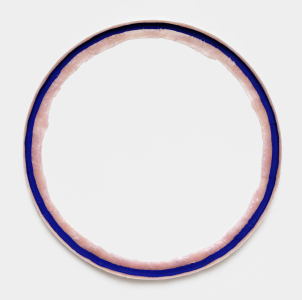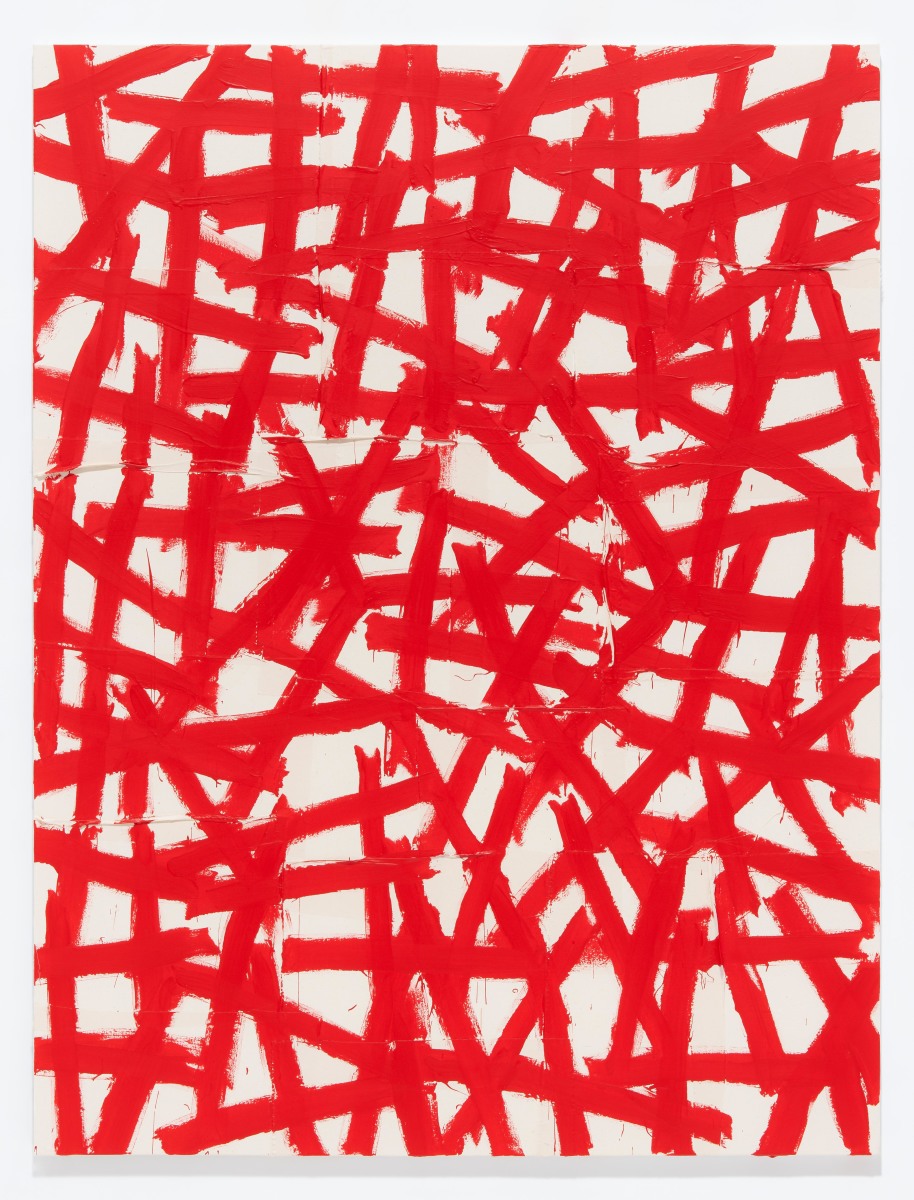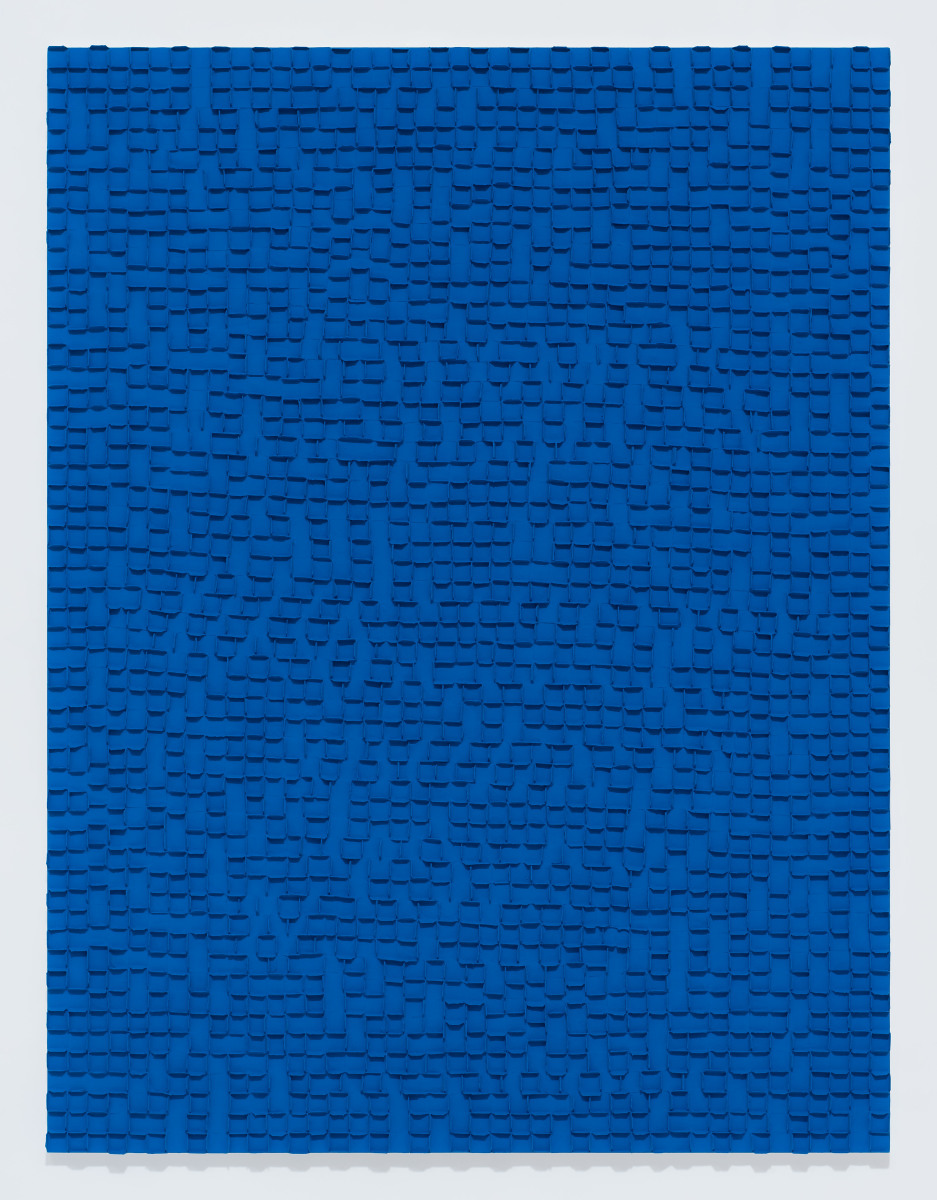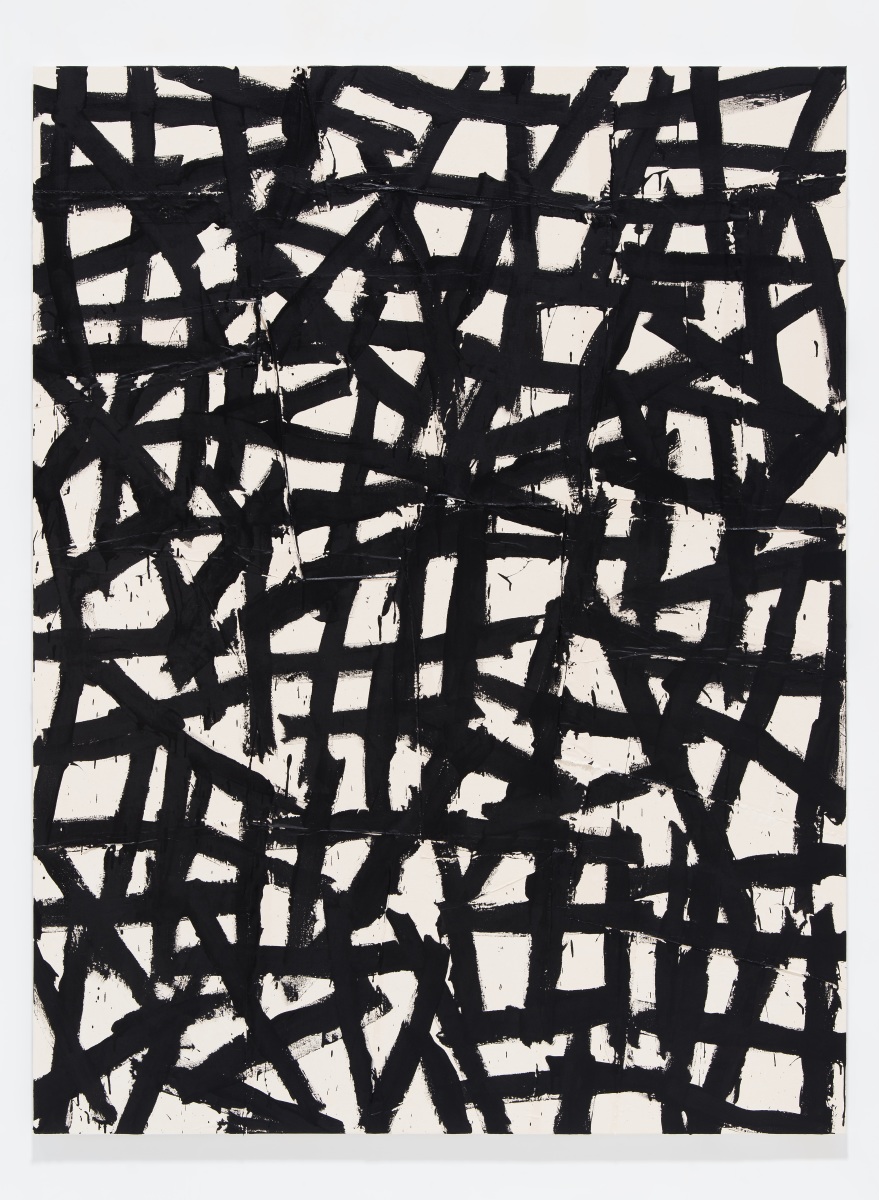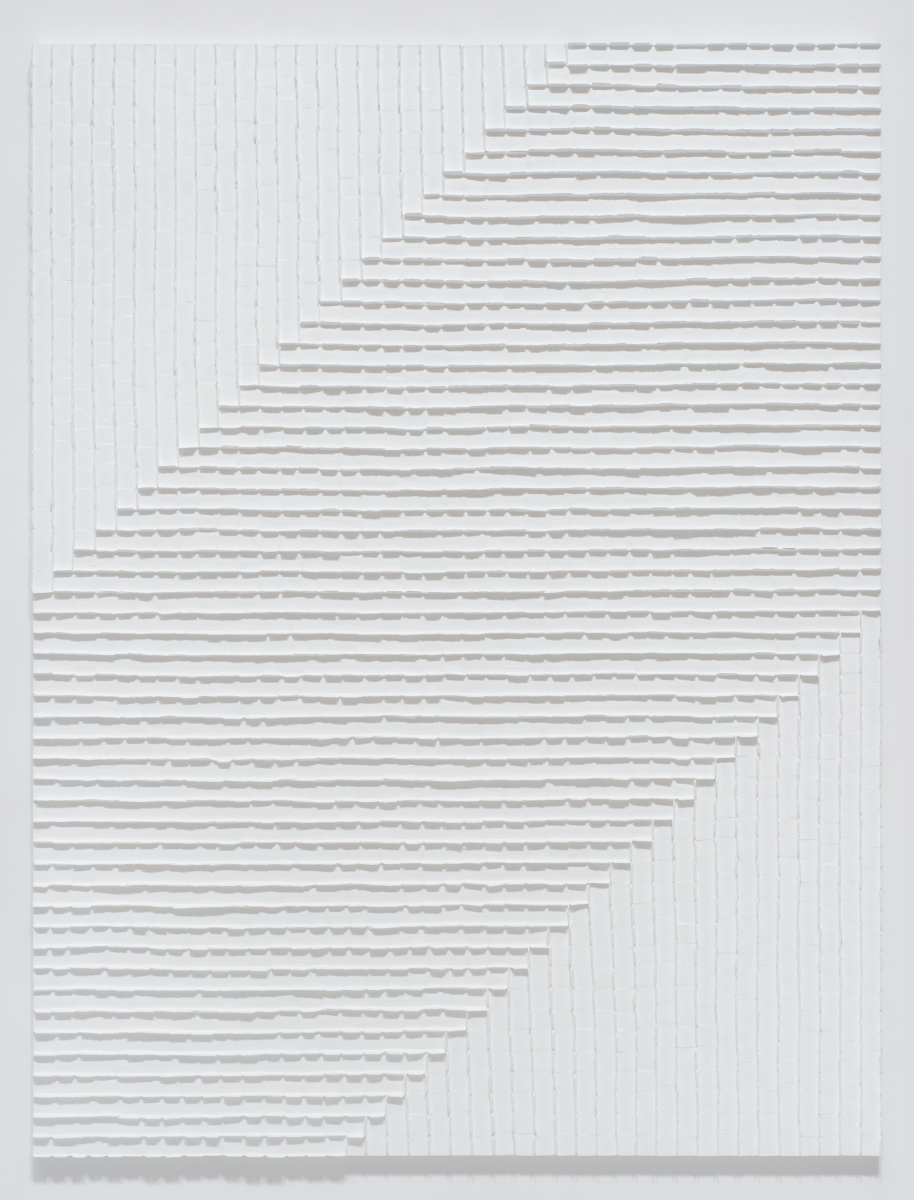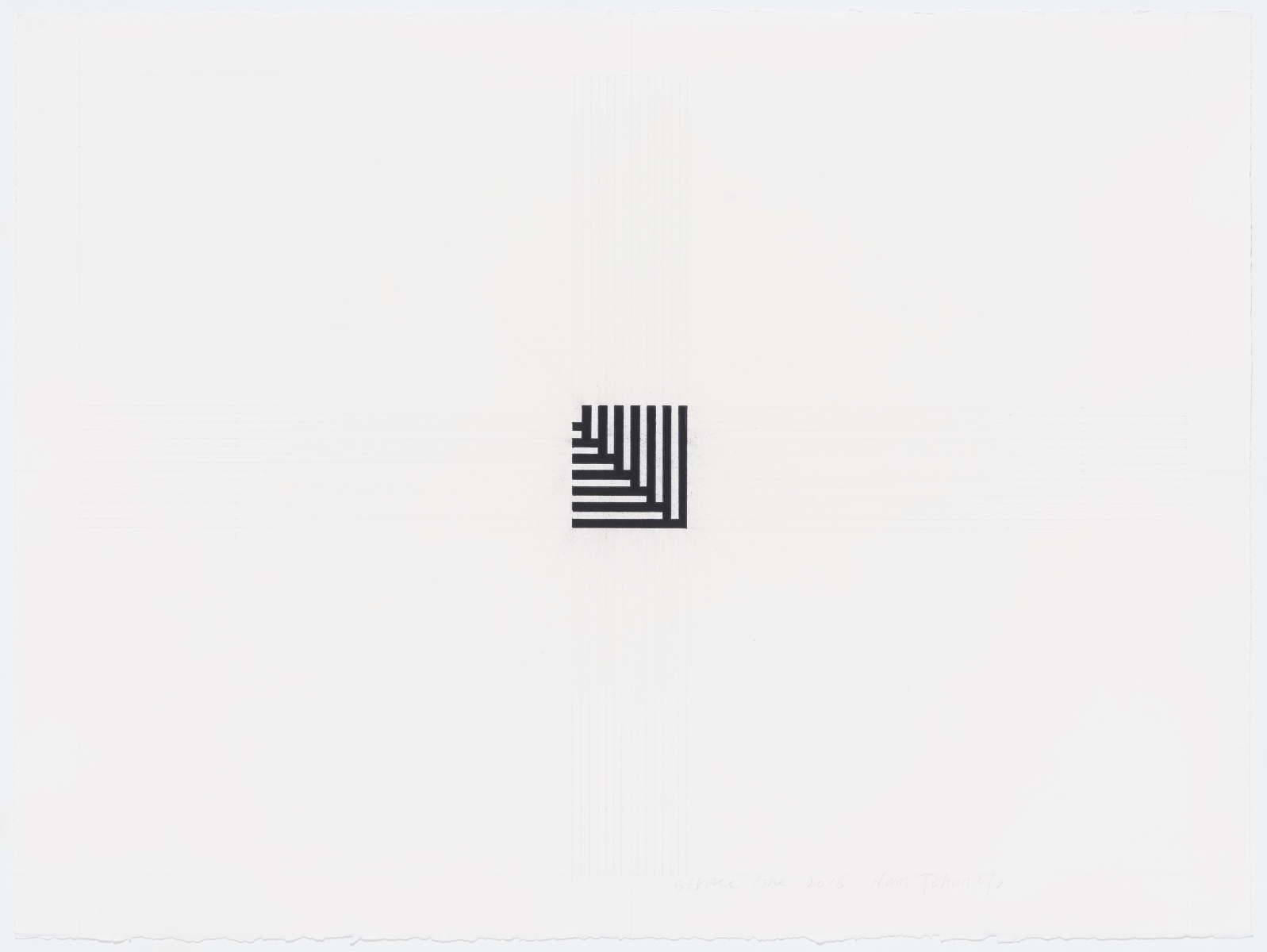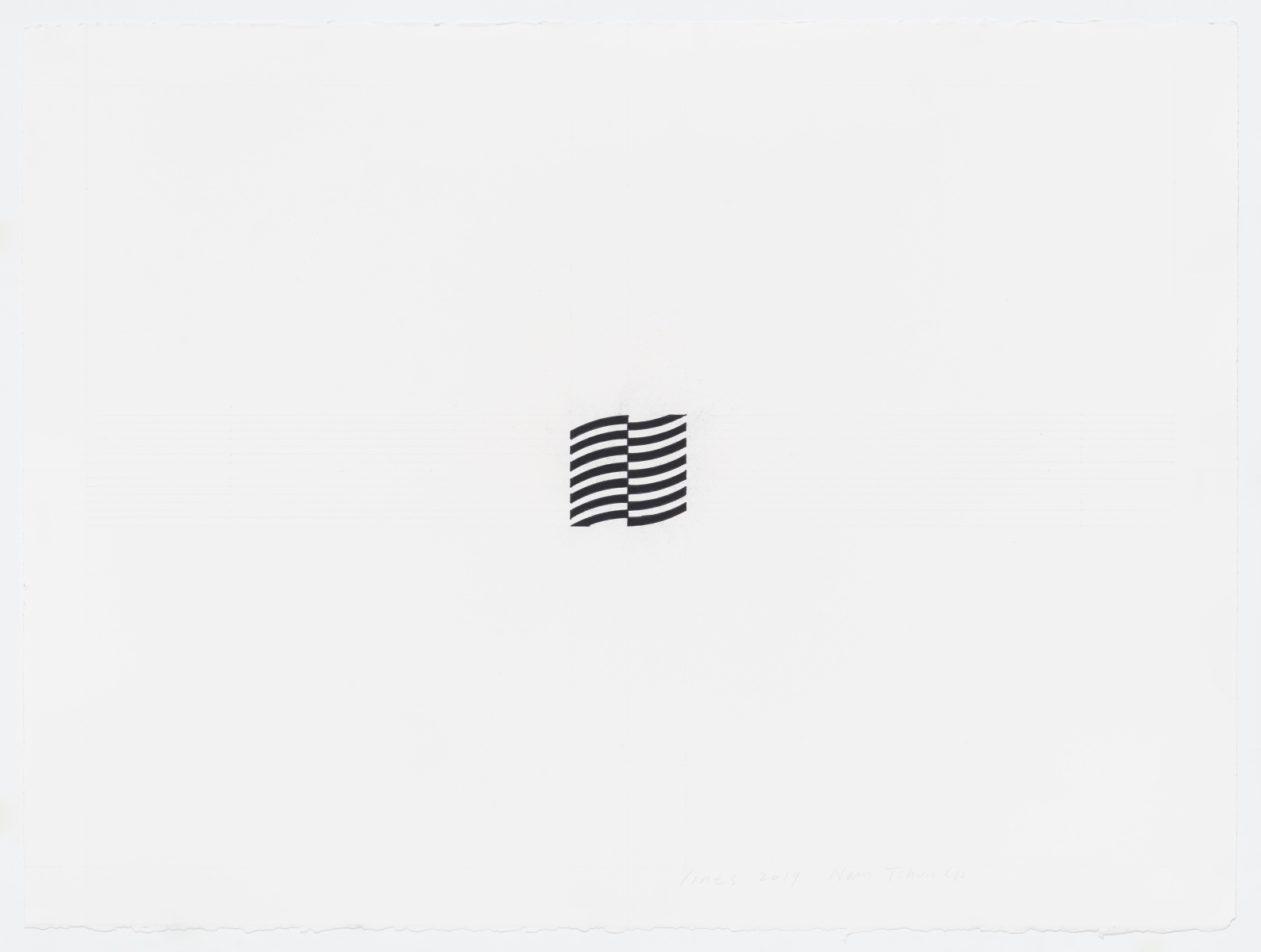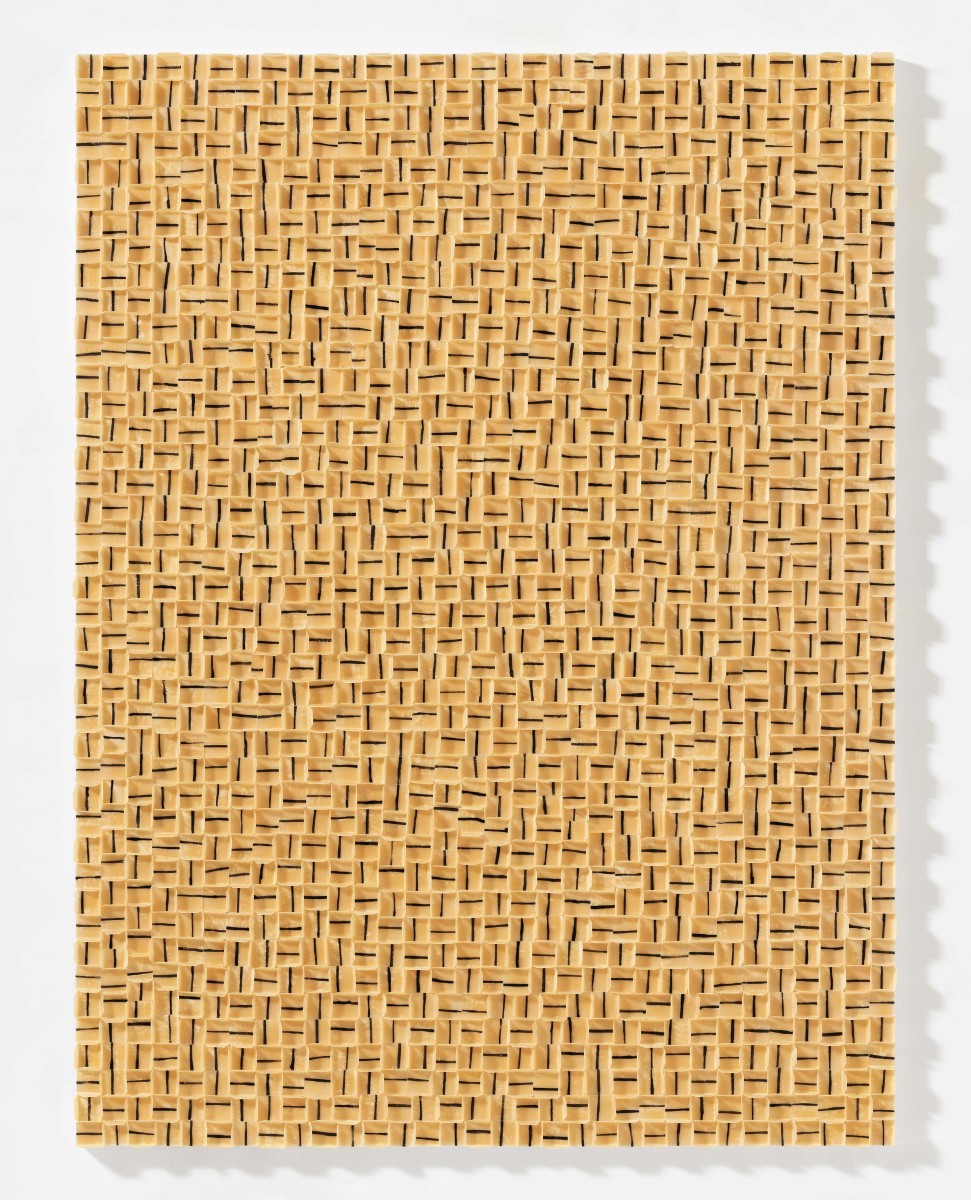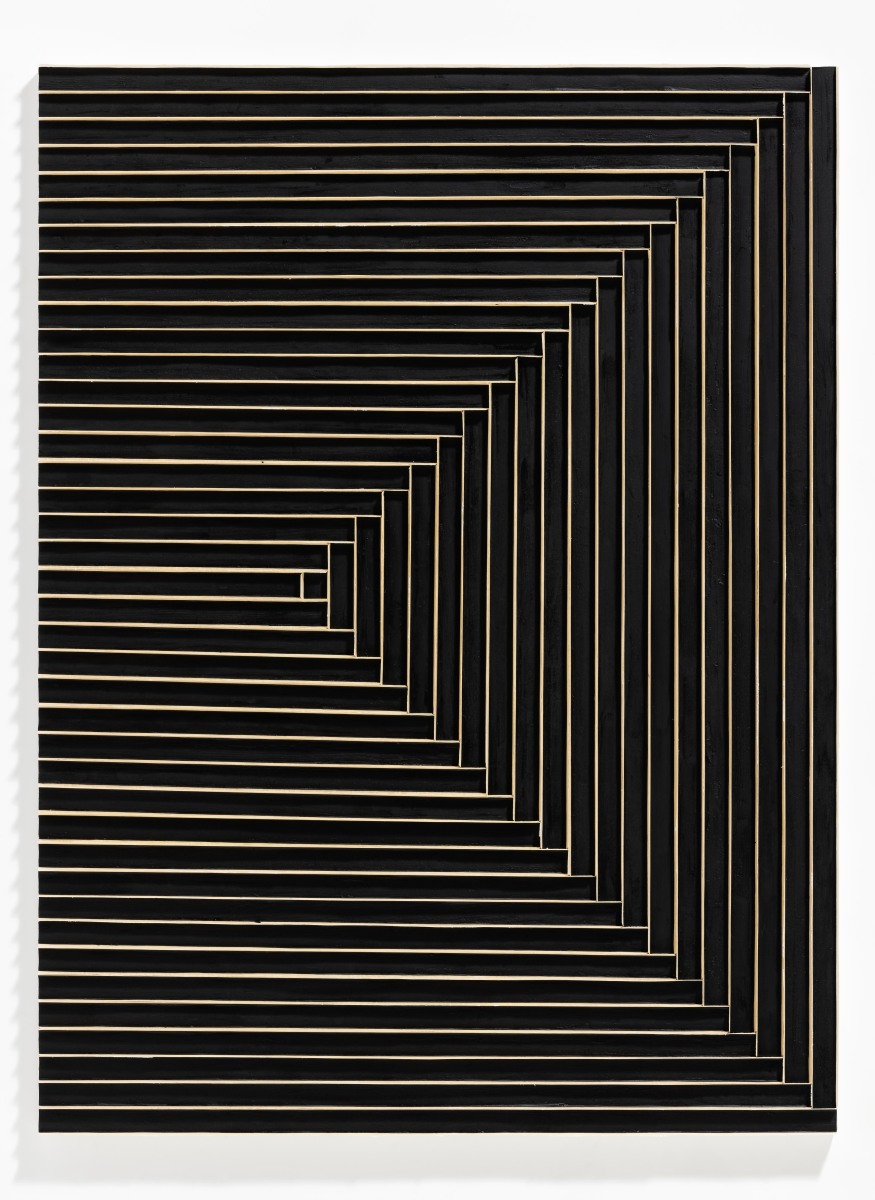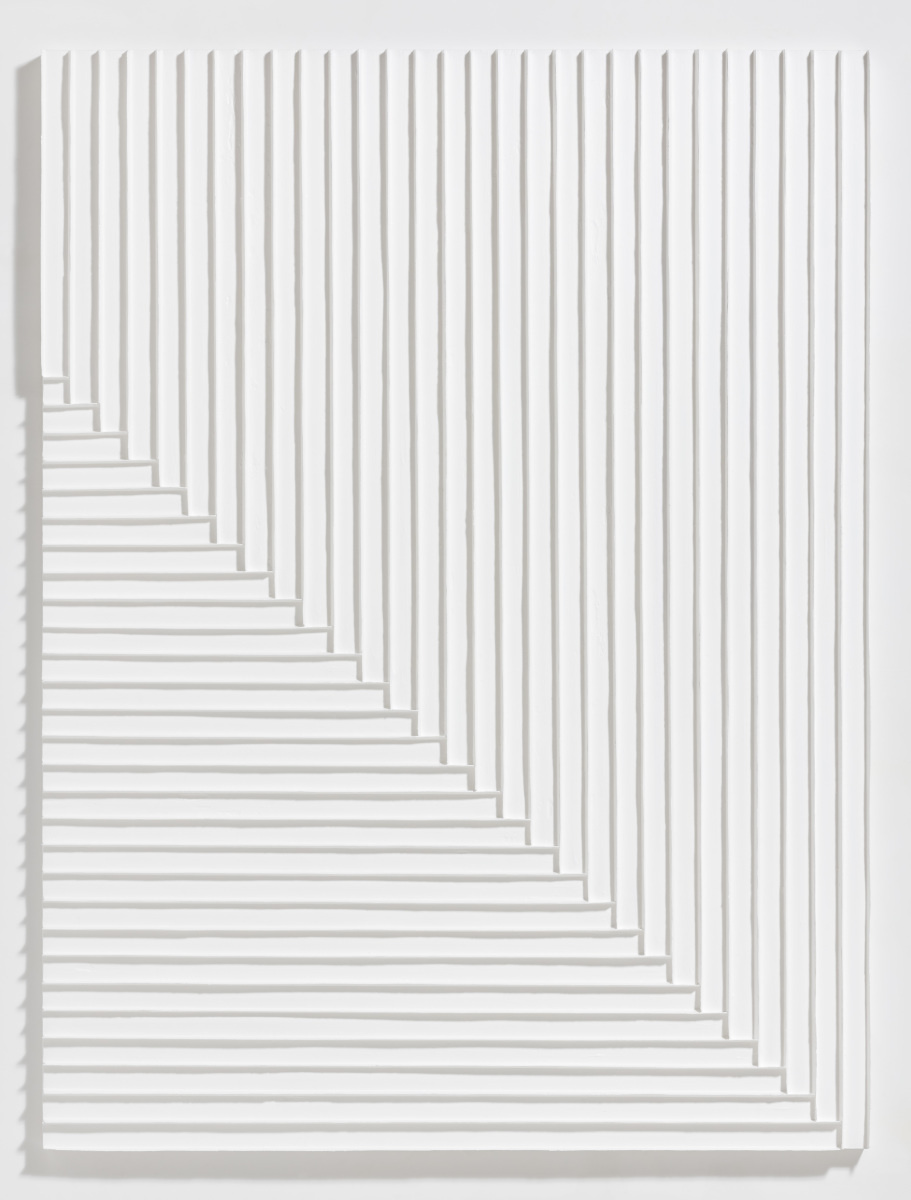Nam Tchun-Mo

Nam Tchun-Mo
Born in 1961, in Yeongyang, South Korea.
Lives and works between Daegu, South Korea and Cologne, Germany.
Education
1988 B.F.A.,Keimyung University, Daegu, South Korea
M.F.A.,Keimyung University, Daegu, South Korea
Introduction
Nam Tchun Mo is a leading figure of the generation of artists in the wake of the Dansaekhwa movement (Korean monochrome, including Lee Ufan, Park Seo Bo, Ha Chong Hyun among other artists), of which he is a direct heir, along with Lee Bae. Nam Tchun Mo lives between Daegu and Cologne. His artistic language is mostly relies on monochrome (white, red or green) and resin –which he uses to create ridge patterns. Arranged in very diverse compositions, they evoke the furrows of tobacco and chili fields the artist used to see from his home as a child. They allow him to work around line, transparency and matt effects, and play with light variations.
- Henri-François Debailleux
Public collections
Art Bank, Seoul, South Korea
Busan Museum of Art, Busan, South Korea
CAD International, Miami, USA
Christie’s, Auction, Düsseldorf, Germany
Daegu Art Center, Daegu, South Korea
Daegu Museum of Art, Daegu, South Korea
Daegu World Cup Stadium, Daegu, South Korea
Daegu Distribution Complex, Daegu, South Korea
Embassy of the Republic of Korea in the Kingdom of Sweden, Stockholm, Sweden
GalilaBarzilai Hollander Collection, Belgium
Hotel Shilla Stay, Samsung Group, Seoul, South Korea
Hotel Shilla Stay, Dongtan, South Korea
Hyundai Heavy Industries Co. Ltd, Ulsan, South Korea
Gyeongnam Art Museum, Changwon, South Korea
Kolon, Seoul, South Korea
Kumho Museum, Seoul, South Korea
Kyungbook National University Hospital, Daegu, South Korea
Kyungbook National University School of Dentistry, Daegu, South Korea
Leeum, Samsung Museum of Art, Seoul, South Korea
Mulliez, Group Auchan, France
National Museum of Modern and Contemporary Art, Gwacheon, South Korea
Paradise Hotel, Busan, South Korea
Seoul Museum of Art, Seoul, South Korea
Schott Music Gmb, Schott Music GmbH&Co.KG, Mainz, Germany
Shinsegae Department Store, Daegu, South Korea
Extended
We can no longer tolerate the duration.
Paul Valéry
Preamble
It took me a while to accept Nam Tchun-Mo's invitation to write about his work. This was for various reasons, or apprehensions, related to the very nature of this work but also to the mistrust I felt in writing from a reading too far removed from the tropisms of the artist and his production. It seemed to me that the few visits to Korea were not enough to dispel this risk of copying an overly European-centric view. And despite my sympathy for the artist, despite the language barrier, and despite all the interest I had in his work, I wondered if I was in the best position to approach the shores of that world... During my last stay in Korea, in the spring of 2018, two events encouraged me to get involved in this adventure. The first was a visit to an important solo exhibition at the Daegu Museum. I then discovered the scope of this work and began to glimpse the ambition it carried. The series that unfolded in this vast place allowed me to finally articulate things and perceive the thread that connected the whole. On the other hand, the physical proximity of the works gave them a more carnal dimension, at least more incarnate, than what the reproductions of the catalogues had led me to believe. I saw the importance of the hand, the imperfection of doing, which gives the work a unique quality. The second, which confirmed all this, was a visit to the workshop, not far from there, and the discovery of the factory of the works, in every sense of the word, as much the place itself, as its environment or the means used for production.
When I returned to France, my decision was made. I will therefore write a few lines allowing me to gather the perceptions and sensations I had experienced and the artist could freely dispose of them, including by choosing not to publish them.
Nam Tchun-Mo patiently continues to develop his work. Paintings, drawings, sculptures, installations, each field of experimentation and work feeds the others, both in the process of elaboration of the works and at the moment of their reception by the spectator. A viewer who, like the artist, will have to accept an essential fact, of which we have often become very stingy: time. It will be necessary to take the time to look, the time to sit in front of a work but also the time to walk through the exhibition: sweep the works laterally with your eyes, in order to reveal their full potential, like these landscapes that you rediscover completely on the way back. Time will be as much that which we decide as that which comes from the outside; this time will also be that of light: we must remember what we feel in the same place, depending on whether we are there in the morning, or at noon, or in the evening. This experience, other painters have done it, and the one we immediately think of is Monet: Cathedrals, Grindstones, Bridges, Stations, Waterlilies.... In music too, it is a question of time and rhythm; we then speak of variations or sequences. A sequel is not a series; things develop in a certain order, according to an internal logic, a movement that is specific to them, their very condition. This is what is at work in Nam Tchun-Mo's work. Nothing spectacular, no masterful demonstration, rather the advent of a pictorial and plastic event that takes shape in a place, this ensemble replayed, reinterpreted with each new presentation. The particular attention given to the hanging1, the care given to each installation, conditions the work, complete it in a way, at the same time as they replay it. The development of the route is just as important: start, continue, finish; walk, stop; approach, step back...
From the scope
I was born in Yeongyang, a town at the foot of the mountains, and as a child I was raised seeing these sloping fields, with large furrows, in which chilli and tobacco, which are the main specialities of this region of South Korea, are planted. To promote this culture and facilitate the growth of the plants, they are covered with large black plastic tarpaulins, which conserve heat and create a greenhouse effect. I have always kept the memory of these grooves, the shimmering and matt effects of the tarpaulins and the light that comes out of them. Similarly, I still remember the different directions, the senses, the orientations given by these line alignments and the impressions they generated. It is these impressions that I try to find and reproduce with my work, these visual experiences that I always have in mind.
It is a great polyptych that unfolds, on the vast back wall, its lateral and vertical extent. In the foreground, a monumental sculpture of several tens of square metres, on the ground or, more precisely, in a slightly elevated position: gullies, grooves catch the light and make it flow like living water. A translucent and opalescent material, light-matter, highly conductive, as one would say of a material for a current. The feeling of a deep expanse, not just a surface but something that comes from below the surface, that nourishes it in depth; that same surface that now seems to dissolve in the light, that trembles in an almost imperceptible but very real rustle. It is here that the works are held, in this space that does not exist in itself but which results from the coexistence of things between them, in a given place, at a present moment. Not a mirage, nothing of an illusion, on the contrary, an augmented reality of the virtuality that it conceals since its creation and that it reveals only in certain circumstances, under certain conditions. And beyond, in the background - but oh so essential - beyond the bay window, the landscape - the fields and mountains in the distance -, the landscape in which the works find their deep origin and which they then join.
Like the landscape, the works, in their extent, are abstract, and mental and, physically, inaccessible. No more, no less. They produce phenomena, and it is to those that we can reach, those that we can approach. What can probably be called an experiment.
From the light
If I create reliefs, volumes, small U-shaped valleys, it is above all, I repeat, to play with light, to introduce it and welcome it into the very interior of each work.
We have spoken of expanse: expanse in block, and horizontal, on the ground, or, on the contrary, on the wall, expanse that develops laterally, vertically. These stretches are made up of lines, with various qualities, often in relief, materially or visually, by a drop shadow that provides this illusion. These lines animate the expanses, whatever they may be, and to do so, they mobilize a unique material, as impalpable as it is real, and difficult to control, under penalty of denying it: light.
The action of light - by definition random, intermittent, unstable - takes over from the artist in the work of shaping the work, but it is an ephemeral, uncontrollable construction, except to freeze the works in a constant light, often detrimental to their perception, or at least, which takes away one of their major qualities, a quality that does not belong to them, an external quality, contingent. Thus, the formal rigour of the work, which could, wrongly, relate it to a certain tradition of geometric abstraction, dissolves under the effect of light and its variations. The line shakes, flickers, like a flame, and the whole surface is transformed - colour, shape, texture.
From the line
Contrary to what one might think at first glance, I proceed in a very complex way, hoping that the line will become a landscape with the help of light.
Nam Tchun-Mo is the guardian of this line. The guardian and the guarantor. So is consciousness. We must keep this line, both tense and flexible, without excessive rigour but avoiding any lyricism; a correct line, as much as possible... But what is a correct line? It is a well-nourished line, above all, a line loaded with memory, but which keeps itself from any chatter. It is a straight line without stiffness, or a curve without excessive volutes, that is wary of effects that are too easy and, more than anything, of those that result from too much virtuosity. It can be so seductive, a line!
It is also a nourishing line; it nourishes a space, a surface, which puts itself at its service without totally subordinating itself to it; a generous line which provides its benefits without displaying them.
This desire for asceticism is also found in the parsimony of colours. Nam Tchun-Mo's approach has sometimes been compared to that of Dansaekhwa artists. He has already expressed himself on this subject: he says that he feels distant from this historical movement - whose importance he recalls, including in his own journey -, insisting in particular on the context that has changed profoundly. Beyond this reference to a major artistic movement, it seems more appropriate to me to speak, for Nam Tchun-Mo, of the profound influence of the landscape. While Dansaekhwa artists feed on the feeling of nature, from a spiritual and philosophical point of view, it is the real, trivial landscape that feeds Nam Tchun-Mo's work. A landscape, if not monochrome, at least rather stingy in colour. And beyond the colour - or below, perhaps - we should talk about the tonality of this landscape, which is essentially made up of brown, beige and grey. There is nothing picturesque or demonstrative about this landscape. He even sometimes seems a little poor, almost dull. It's not beautiful and great scenery. It's more than that: it's a familiar, everyday landscape. Apart from the mountains that occupy almost the entire territory of the peninsula, it results from agricultural activity: small plots where rice is grown, many market gardens, and therefore countless tunnels, often black. Above all, the use of this landscape speaks to us of a particular relationship to space; of its rarity; a space that must be intensely occupied, even along roads and railways, like these garden strips densely populated with plants of all kinds that accompany us throughout the country's journey.
The Nam Tchun-Mo workshop is located in the heart of these landscapes without quality. To get an idea, just watch Lee Chang-dong's latest film, Burning (2018). It seems to me that this landscape has rarely been filmed with such accuracy.
The workshop is organized as an efficient production and storage tool. The assistants are at work, quiet and diligent. The artisanal dimension of this production is not an anecdotal. As with any activity of this nature, you need to be caring and organized. Things are being developed patiently. Time is always at the heart of the production process. We are here at the opposite end of the spectrum from a spontaneous, fast, impetuous creation, a lyrical gesture; everything is thought out, thought out, measured; almost industrial, never industrial. Indeed, nothing systematic in this production, the hand is there, which ensures that the gesture, although under control, retains a certain latitude. Once again, everything is at stake between what is controlled and what escapes; a tenuous, almost imperceptible space, where the work happens, escaping the becoming object to which the workshop could have destined it, or forced it. It is in this place, difficult to identify, to name, to circumscribe, that things stand. This difficulty in apprehending also makes the quality of this work difficult to locate, unless it is enclosed in categories that are unsuitable to express its singularity. The temptation could be great to summon a certain history of abstraction, both constructed and geometric. The names of some movements and artists would come up quite quickly... Like an obstacle! I would be careful not to name them. On the one hand, to avoid, as far as possible, any European-centred reading. If Nam Tchun-Mo, like his Korean contemporaries, knows the history of Western art perfectly, even in its most recent manifestations, he also draws his art, and his vision, from a more local tradition and thought. It does not oppose traditions; nor does it fall into a form of syncretism. He convenes, as often as necessary, works, landscapes, thoughts, from here and there, for the needs of his art, and according to the path he has chosen. It is neither an international standardised art nor a local folk art. It is, like any real art, a hybrid, mixed, complex art: an impure art. And doubly so! In other words, it is free from this fiction on both a formal and a more philosophical level. No essentialism in this art. The line is clear without being authoritarian. It is not a sententious art. Nor is the artist.
From the sensation
If my works seem calculated, constructed, they are once they are finished, it is the result that gives this effect. Because their scheduling is not premeditated, thoughtful. It is much more the result of chance, of spontaneity. With in my head the references from my childhood that I mentioned earlier, I would say that my work is above all very intuitive. Often it is when the work is finished that I realize exactly what I have done.
I would also like to, end by returning to the question I expressed at the beginning of this text: the difficulty of writing about these works, because of their very nature. Of course, I could say this about other works, but not about all of them and, above all, to varying degrees. On the contrary, there are even works that naturally lead to the construction of narratives or analyses. This is not the case with these. The event they constitute keeps us outside language, or at its threshold. Any discourse, any analysis, can only be done on the periphery. Not that they are inaccessible (what some contemplative people would call hermetic): it is quite possible to venture into them, but it is done by other means. Language, as it also constitutes the gaze in our relationship with the world, its history, our memory, is certainly not entirely foreign to this process, but it is not, or no longer, at the heart, and first. And this is what constitutes in depth this experience: this inability to lock oneself in words, images, stories; this difficulty - finally! - to name what we see. The scope referred to at the beginning of this text refers us to this disturbing experience of dispossession. We will have to leave the categories that usually accompany us at the entrance of the exhibition. And you'll have to take the time - always him! - to agree in another way with the works and places they produce. It cannot be otherwise, under penalty of depriving oneself of the essential: the joy of being fully present in the world through forms which, although abstract appearances - or perhaps, because of abstract appearances - return us to its most living and nourishing sap.
Olivier Delavallade, March 2019
1. The scenography was designed by Lee Hyun Jae, one of Korea's most talented architects.
Note: Nam Tchun-mo's quotations are taken from an interview with art critic Henri-François Debailleux, and published in the catalogue of the Daegu Museum exhibition (2018).
Nam Tchun-Mo, Wandhaff
May 25 - July 20, 2024
Nam Tchun-Mo, Saint-Etienne
December 17, 2022 - February 18, 2023
Nam Tchun-Mo, New York
April 20 - June 04, 2022
Nam Tchun-Mo, Paris
September 03 - October 10, 2020
Group shows at Ceysson Gallery
Spring Paris, Paris
May 18 - July 23, 2020
Solo shows (selection)
2019
Ludwig Museum, Koblenz, Germany
Leeahn Gallery, Seoul, South Korea
2018
Line to Landscape, Daegu Art Center, Daegu, South Korea
Collision and Re-spreading of Lines, Gyeongnam Art Museum, Changwon, South Korea
2017
Aando Fine Art, Berlin, Germany
2016
Leeahn Gallery, Daegu, South Korea
Art'Loft, Brussels, Belgium
2015
Leeahn Gallery, Seoul, South Korea
Where Light and Dark Collide, Aando Fine Art, Berlin, Germany
Presentation, Vienna Contemporary, Vienna, Austria
Beam 2015, Kunstraum21, Bonn, Germany
2014
Gallery 604, Busan, South Korea
Gallery Yedong, Busan, South Korea
2013
Holly Hunt&Nam Tchun Mo,New York Space Hongjee, Seoul, South Korea
2012
Gallery M, Daegu, South Korea
BIBI Space, Daejeon, South Korea
Galerie Landskron Schneidzik, Nurnberg, Germany
2011
IBU Gallery, Paris, France
2010
Atelier24, Gelterkinden, Switzerland
Gallery Date, Busan, South Korea
2009
IBU Gallery, Paris, France
Seok Gallery, Daegu, South Korea
2008
Gallery Uwe Sacksofsky, Heidelberg, Germany
Gallery F5, Beijing, China
2007
CAIS Gallery, Seoul, South Korea
Seok Gallery, Daegu, South Korea
2005
Atelier24, Gelterkinden, Switzerland
Lee Hyun Gallery, Daegu, South Korea
2004
Johyun Gallery, Busan, South Korea
2003
CAIS Gallery, Seoul, South Korea
2002
Lee Hyun Gallery, Daegu, South Korea
2001
Park Ryu Sook Gallery, Seoul, South Korea
Kumho Museum, Seoul, South Korea
Hyundai Arts Center, Ulsan, South Korea
Gallery M, Daegu, South Korea
2000
Ci Gong Gallery, Daegu, South Korea
Johyun Gallery, Busan, South Korea
1998
Ci Gong Gallery, Daegu, South Korea
1996
Ci Gong Gallery, Daegu, South Korea
1994
Galerie Epikur, Wuppertal, Germany
1993
Gallery XAS-multikult, Frankfurt, Germany
1992
Dubitz Gallery, Daegu, South Korea
1989
Yemak Gallery, Daegu, South Korea
Group shows (selection)
2020
Printemps , Galerie Ceysson & Bénétière, Paris, France
2018
The Post Dansaekhwa of Korea, Leeahn Gallery, Seoul, South Korea
Absence, Art'Loft, Brussel, Belgium
2017
Beautiful Black, Leeahn Gallery, Daegu, South Korea
2016
Made in the EAST, MDZ Art gallery, Knokke, Belgium
KunsttageWinningen. Winningen, Germany
Changing Time, Kunstraum21, Bonn, Germany
2015
Korea Tomorrow, Sungkok Art Museum, Seoul, South Korea
Leading Artists 2015, Daegu Art Center, Daegu, South Korea
Korean Contemporary Art, Ulsan Culture Art Center, Ulsan, South Korea
2014
AHA, Kunstraum21, Bonn, Germany
Blue & D major, Ilju & Seonhwa Gallery, Seoul , South Korea
Painting not Painting, Park Ryu Sook Gallery, Seoul, South Korea
2013
10th anniversary of Gallery Bernd A. Lausberg, Galerie Bernd A. Lausberg, Dusseldorf, Germany
The exhibition of 3 artists, Dongwon Gallery, Daegu, South Korea
Reconfiguring Contemporary Art:From a Korea Perspective, ICAS, Singapore
2012
Monochrom in Korea, Gallery Dorothea van der Koelen, Manz, Germany
Dansaekhwa: Korean Monochrome Painting, National Museum of Modern and Contemporary Art, Gwacheon, South Korea
Light & Color ,Space BBK, Cologne, Germany
2011
Made in Daegu, Daegu Art Museum, Daegu, South Korea
Konkrete Abstraktion, Gallery Bernd A. Lausberg, Dusseldorf, Germany
The exhibition of 3 artists, Gallery Chungdam, Daegu, South Korea
Minimal Esthetics, Tong-In Auction Gallery, Seoul, South Korea
2010
Iwami International Exhibition of Contemporary Art, Iwami, Japan
In Side Out, Bongsan Cultural Center, Daegu, South Korea
The Young artists of Today, Daegu Arts Center, Daegu, South Korea
2009
Rhythm, Forms, and Intimacy: Spectrum, Sejong Center, Seoul, South Korea
New painting, Gallery yfo, Daegu, South Korea
Painted Painting, Art Park, Seoul, South Korea
2008
Vacuum Space, Gallery Ssamzie, Seoul, South Korea
Color, Face, Space, Gallery Mokkumto, Seoul, South Korea
2007
Art in Life, Molteni & C, Seoul, South Korea
2006
Light & Mind, Shin Museum of Art, Cheongju, South Korea
Sea Art Festival, Busan Biennale2006, Busan, South Korea
Quadrangle's Colors, M Gallery, Daegu, South Korea
2004
Monochrome Paintings of Korea Past and Present, Seoul Museum of Art, Seoul, South Korea
15th Anniversary Special Exhibition 86, Kumho Museum of Art, Seoul, South Korea
Nam Tchunmo - Bitzigeio, LandtagRheinland-Pfalz, Mainz, Germany
SUM of the Contemporary, Deagu Art Center, Daegu, South Korea
Nagasaki Contemporary Art Show, Nagasaki, Japan
2003
Extreme Beauty, Sungkok Art Museum, Seoul, South Korea
A Pleasant Workshop, Seoul Museum of Art, Seoul, South Korea
Happiness, Art Space M-POST, Seoul, South Korea
20th Anniversary Special Exhibition, Park Ryu Sook Gallery, Seoul, South Korea
2002
Aesthetic Meeting, Nine Gallery, Gwangju, South Korea
2002 Daegu Contemporary Art Show, Daegu Art Center, Daegu, South Korea
Korean Contemporary Art, Daegu Art Center, Daegu, South Korea
September 9 Artists, BIBI Space, Daejeon, South Korea
Share Living and Joy, Park Ryu Sook Gallery, Seoul, South Korea
2001
Korea Art 2001: Return to Painting, National Museum of Modern and Contemporary Art, Gwacheon, South Korea
Refreshment, Sungkok Art Museum, Seoul, South Korea
Public Collections
Art Bank, Seoul, South Korea
Busan Museum of Art, Busan, South Korea
CAD International, Miami, US
Christie’s, Auction, Düsseldorf, Germany
Daegu Art Center, Daegu, South Korea
Daegu Museum of Art, Daegu, South Korea
Daegu World Cup Stadium, Daegu, South Korea
Daegu Distribution Complex, Daegu, South Korea
Embassy of the Republic of Korea in the Kingdom of Sweden, Stockholm, Sweden GalilaBarzilai Hollander Collection, Belgium
Hotel Shilla Stay, Samsung Group, Séoul, South Korea
Hotel Shilla Stay, Dongtan, China
Hyundai Heavy Industries Co. Ltd, Ulsan, South Korea
Gyeongnam Art Museum, Changwon; South Korea
Kolon, Seoul, South Korea
Kumho Museum, Seoul, South Korea
Kyungbook National University Hospital, Daegu, South Korea
Kyungbook National University School of Dentistry, Daegu, South Korea
Leeum, Samsung Museum of Art, Seoul, Corée du Sud
Mulliez, Group Auchan, France
National Museum of Modern and Contemporary Art, Gwacheon, South Korea Paradise Hotel, Busan, South Korea
Seoul Museum of Art, Seoul, South Korea
Schott Music Gmb, Schott Music GmbH&Co.KG, Mainz, Germany
Shinsegae Department Store, Daegu, South Korea
LE PETIT BULLETIN - Lignes de vie - Niko Rodamel - 10 février 2023
LE PETIT BULLETIN - Niko Rodamel
February 10, 2023
Voir le fichierLE PROGRÈS - L'oeuvre séduisante et radicale de Nam Tchun-Mo - 2022
LE PROGRÈS -
December 24, 2022
Voir le fichierArt Brussels
April 25, 2024
Luxembourg Art Week
November 12, 2021

Nam Tchun-Mo
December 17, 2022
